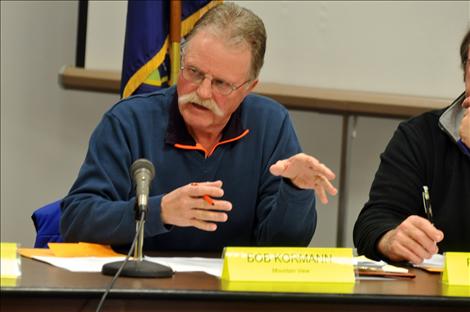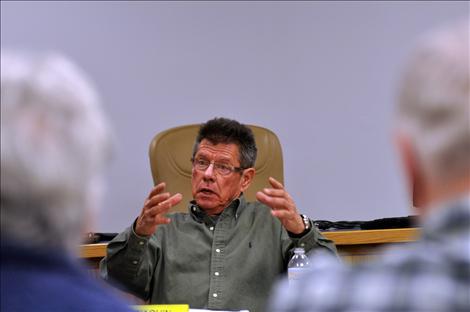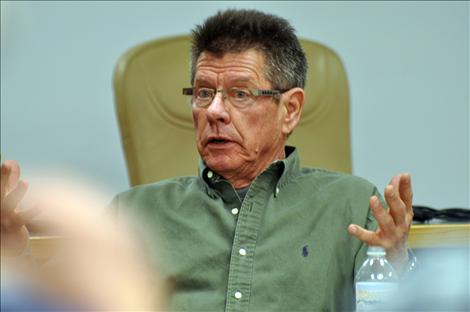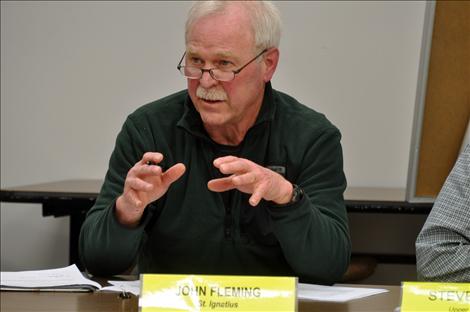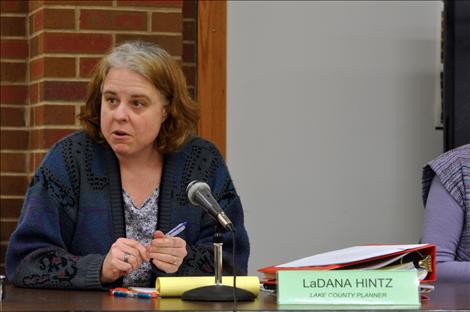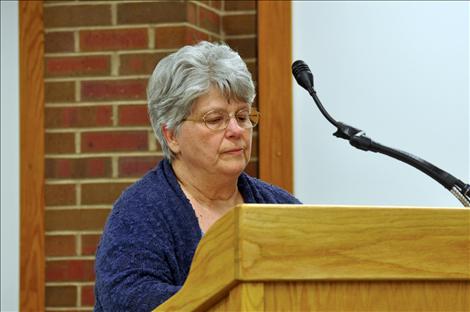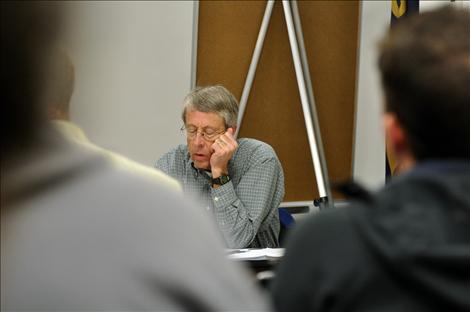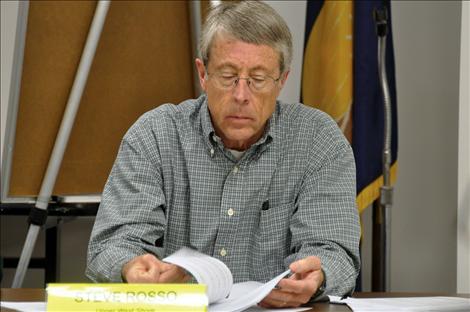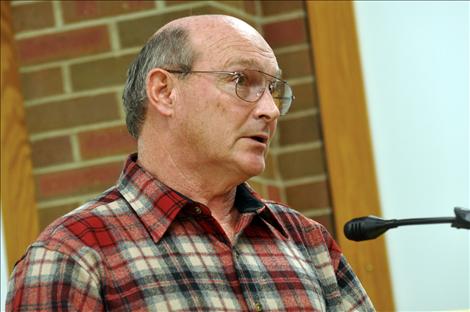Density regulations review begins
Hey savvy news reader! Thanks for choosing local.
You are now reading
1 of 3 free articles.
Nancy Posivio’s family has owned a 2.5-acre Swan Lake property for more than 50 years, and when she and her two siblings recently inherited the land, each had their own idea of how they would like to purpose the place.
The ideal and simplest option to resolve the issue was to split the land three ways, into an 0.8-acre section for each sibling, but when the trio approached the Lake County authorities about doing so, the family found out that current density regulations prohibit such actions. The property couldn’t be split between three people, and even if it could, it would be expensive.
Nancy’s family was forced into court because of the lack of options.
“It has caused a family rift that’s been very uncomfortable and unhealthy to say the least,” Nancy said in tears on March 12 as she stood in front of the Lake County Planning Board with her husband Bill.
“It’s our hope that provisions are made to take into consideration rules and regulations that divide property, not families,” Bill said.
The Posivio’s situation is far from uncommon, according to Lake County Planner LaDana Hintz. A handful of citizens told horror stories of their experiences with the density regulations to the county planning board last week. The Lake County Commissioners have committed to re-writing the rules by the end of the year, and are looking for fresh ideas about how to streamline government so it works for citizens.
“We want to hear from the public, because we don’t want to sit here and put something in place that’s not what the people want,” Planning Board Chairman Bob Kormann said.
The current density map was created in 2005, and was reviewed in 2006. An additional review was supposed to be held in 2010, but the county planning staff never got around to it mostly because of poor timing that coincided with other duties, Hintz said. The density map split Lake County into units of 40 acres, 20 acres, 10 acres, 5 acres, 2 acres, 2.5 acres and 1.5 acres based on population density. The more dense the population, the smaller a unit can be. Property cannot be broken off and sold in parcels less than the amount of the density unit they are zoned for. The purpose of the map was to keep development in already populated areas and prevent clusters of settlement from popping up in remote places where it is difficult for the county to provide services like fire protection.
Ronan resident John Swenson took issue with the concept of pushing people from rural, agricultural wild lands and forcing them into a more urbanized center.
“I would like you all to look deep into your souls, as deep as you possibly can, and ask if that’s really your job – to move people where services can be provided,” Swenson told the planning board. “I personally don’t think it’s your job to move people anywhere.”
Polson resident Rick Van Voast, the sole supporter of the current density plan who spoke at the meeting, said he considered whether the plan could be a ploy to bring people into more urban areas.
“I’ve given it thought, and I think it’s doubtful,” Van Voast said.
Regardless of the document’s intent, its functionality has posed a headache for citizens trying to develop, sell, or gift their land and Lake County officials who try to follow the rules.
“It’s difficult to administer,” Hintz said.
Planners regularly grapple with a lack of definition for what a constitutes a “guest house,” and whether people can have home businesses in their garage or not, Hintz said. Property inherited or owned by multiple family members also pose problems. Hintz had a long list of additional issues she said could be addressed, including the county’s current noncompliance with state laws that took effect in 2013. The law requires counties to adopt rules for buildings for sale or lease.
Many of Wednesday’s speakers experienced problems with one rule originally intended to make the density map less cumbersome. Exceptions to the density regulations allow for transfers of property to be made between family members, but the process is anything but simple.
Alan Griffiths wanted to gift each of his children 40 acres of a 140-acre piece of land west of Polson. The zoning map indicated the minimum size of a unit to be given away was 20 acres based on population density, so Griffiths expected the property transfer to occur quickly and without incident.
“I gave my children a bigger piece of land to avoid problems,” Griffiths said.
Griffiths spent $10,000 on a surveyor to make sure everything was in order, but five minutes before the hearing for the land transfer began a member of the county’s staff walked in, handed Griffiths a thick binder of papers that included a “disapproved” stamp on the back page.
“Then I sat there and listened to the county planning department call me a liar and tell me I’m trying to subdivide my property and use my kids as a way to do it, ” Griffiths said. “It was embarrassing. It was humiliating. The county attorney basically called me a liar to my face.”
Griffiths then had to spend an additional $5,000 in attorney fees to push the process through, but restrictions were still placed on his and the children’s property after the transfer.
“My experience has been that the only way you can accomplish anything is with an attorney,” Griffiths said. “The average citizen is basically bullied around … I was so frustrated I was ready to move out of Lake County. I was embarrassed to be a citizen of the county.”
Hintz said her office has reformed the process that Griffiths had to go through in order to make it more user friendly, but Ronan resident John Schnase recently completed the process and had a similar experience.
Schnase wanted to sell five of his 20 acres to his son. He began the process in 2010. Because Schnase’s property was purchased through a limited liability corporation, it raised flags in the county planning department that Schnase might be setting his son up as a straw man corporation to later start a subdivision.
That was never Schnase’s intent and his family was called before the county planning board to plead their case.
“What a ridiculous thing for me to have to come up here and ask permission to take five acres of my property and sell it to my son,” Schnase said.
“Who gives anybody the right to tell me what to do?”
In May 2013 the property transfer was complete, but only after Schnase paid $3,040 in attorney fees to get the job done. Schnase was also required to hypothesize where he might hypothetically want to place a house and its drainage system if he ever chose to develop his 15-acre cow pasture.
“It’s a cow pasture,” Schnase said. “That’s what I use it for.”
Then a letter arrived from the Montana Department of Environmental Quality that told Schnase that his proposed drainage, sewer system, and roads for the imaginary house he never intended to build was all wrong.
“This is absolutely ridiculous,” Schnase said. “I only went through all this red tape because I love my son.”
Hintz said not all of Schnase’s problems pertain to the density map, and that some of the overlapping regulations imposed by the county environmental health department that kick in during property transfer might also need to be addressed. Hintz encouraged people to contact the planning department with their concerns and ideas about how to make the system better.
“We need the public to say ‘we don’t want this,’” Hintz said.
Comments can be sent to planning@lakemt.gov.















